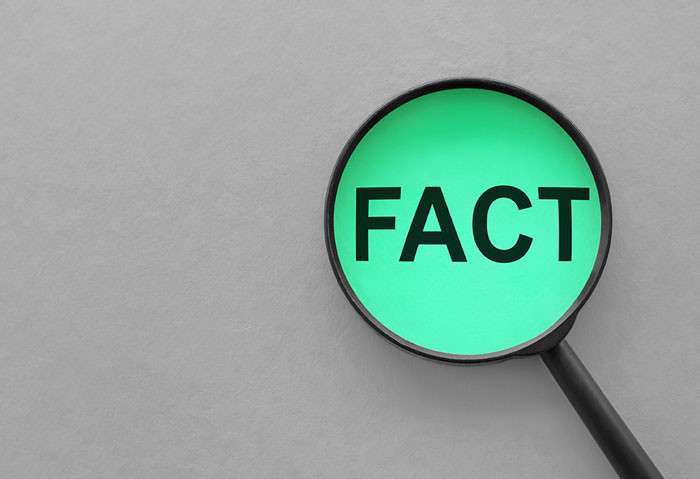The development of technology in the modern world has changed the way business people carry out their activities. It even includes the basic activity that is always carried out in any field of business: signing documents.
From the original use of wet signatures on physical documents, now many companies are starting to switch to electronic signatures. When the two are compared, electronic signatures do offer a number of advantages, ranging from increasing efficiency, saving time, to reducing expenses.
However, it cannot be denied that perhaps the use of electronic signatures is still quite foreign to some people, especially if they have been too accustomed to using wet signatures. Therefore, to be more familiar with this one signature technology, here are the important things you need to know about electronic signatures.
1. Electronic signatures are different from scanned signatures
Generally speaking, digital signatures are indeed digital. A digital signature differs from a wet signature scan “pasted” on a digital document. Implementing a mathematical system, the form of a digital signature cannot even be equated with a wet signature, as the process involved is more complex.
If you adhere to Article 1 Number 12 Law Number 19 Year 2016 concerning Amendments to Law Number 11 Year 2008 concerning Electronic Information and Transactions, the digital signature is defined as a signature consisting of digital information that is attached, associated, or related with other electronic information that is used as a verification and authentication tool.
The verification and authentication functions in digital signatures are inseparable from the role of the cryptographic system embedded in them. Thanks to this system, a digital signature is not only digital, but also contains encrypted data and a digital certificate from the owner of the electronic signature.
Because of this, the function of a digital signature is no longer just to show the signer's intention, but also to prove that a document is legally valid. In addition, because it already has a certified digital identity, the document is proven to come from a valid entity.
2. Equipped with a digital certificate from a third party
The cryptographic system in the digital signature is provided by a digital certificate. As the name implies, a digital certificate contains important data related to a digital signature. So, when a digital signature is affixed to a digital document, the digital certificate will record the signature along with important information about the identity of the signer and the time that the signature was made.
If the document is changed in any way, the digital certificate will also record the change so that you can track it. This means that the risk of forgery, duplication, or misuse of documents is minimized.
Digital certificates can only be issued by third parties called digital certificate administrators (PSrE) or certificate authorities such as VIDA Sign. The PSrE acts as a facilitator, organizer and supervisor in the implementation of digital signatures. Its job is to compile a hierarchy or level for digital signing of digital documents.
3. The way it works involves a public key infrastructure
In carrying out the encryption function or cryptographic system, the digital signature implements a public key infrastructure (PKI). You could say this is the main way electronic signatures work. A PKI involves two types of keys, a private key and a public key. The private key can only be opened by its partner key, that is, the public key. So, how does the locking process occur in digital documents?
The digital document to be signed will be encrypted with a private key in another form called ciphertext. The ciphertext has the same content as the original document. However, ciphertext is shaped like a random sequence of code so that it cannot be read and interpreted literally.
The ciphertext together with the public key and digital certificate are embedded in the digital document. In other words, there are three bits of digital information embedded in an digitally signed document. The entire process is carried out by a PSrE such as VIDA Sign. Later, VIDA Sign will send the signed document to the recipient. If the digital signature is proven valid, it will be decrypted using the public key so that the recipient of the document can be accessed.
During the decryption process, the digital document is again transformed into ciphertext using the public key. The ciphertext is compared with the previous ciphertext that was attached to the sent document. If the two ciphertexts are proven to be the same, then the document sent and received is the same document without any changes in it. Through this process, the digital signature also serves to prove the validity of a document.
4. Digital signatures are able to speed up the document signing process
Compared to wet signatures, digital signatures offer a much faster process for signing digital documents. Given that wet signatures can only be used on physical documents, everything has to be done manually. In order to be able to sign, you must first print the document.
If the document has to be signed by several parties, you must submit it to the parties concerned. Maybe it wouldn't be a problem if all the parties are in the same company. However, what if each of them is located in a different place or city? Inevitably you will have to physically expedite the documents. This whole process takes a lot of time, money, and effort.
Luckily, this can be overcome by using a digital signature. Because it is digital, you don't need to print out any documents in order to get them signed. Then if, for example, the parties concerned are in different places, you can easily send documents via email to save time and effort.
Not only that, the use of digital signatures can also help save costs because you don't have to pay for document printing, printing machine maintenance, or expediting costs for document delivery. You don't even need to pay special fees for managing and archiving physical documents, because e-signed documents can be stored digitally and securely.
5. Has the same validity before the law as a wet signature
Some of you may still be wondering, “What about the legality of digital signatures in the eyes of the law? Do they have the same legal standing as a wet signature? "
No need to worry. Digital signatures already have the same validity in the eyes of the law as wet signatures. In Indonesia, digital signatures are regulated under Article 1 Number 12 Law Number 19 Year 2016 concerning Amendments to Law Number 11 Year 2008 concerning Electronic Information and Transactions. Based on the law, digital signatures are considered to have legal force and legal consequences provided that they meet the following conditions:
-
The digital signature creation data is known only to the owner of the signature.
-
Only the owner of the digital signature is entitled to use the signature.
-
Any changes to the digital signature occuring after signing are known.
-
Any changes to digital information related to digital signatures can also be noted.
-
There is a specific way of identifying the owner of the digital signature.
-
There is a specific way of ensuring that the digital signer has given consent to related digital information.
Apart from the aforementioned laws, regulations regarding digital signatures in Indonesia are also reviewed in a number of other provisions. Here's the list:
-
Government Regulation (PP) No. 82 of 2012 concerning Implementation of Electronic Systems and Transactions
-
OJK Regulation (POJK) No. 77 of 2016 concerning Information Technology-Based Lending and Borrowing Services
-
OJK Circular Letter No. 18 / SEOJK.02 / 2017 concerning Governance and Risk Management of Information Technology in Information Technology-Based Lending and Borrowing Services
6. Can be used for numerous purposes
As with wet signatures, the use of digital signatures also has a very broad scope. The technology can be implemented in almost all kinds of business operations, from banking and insurance, to taxes.
Banking
So far, banking customers have to come to bank branch offices to get services. They are required to provide a wet signature as part of the identity verification process. However, with a digital signature, customers can now still get the services they need without having to go to a bank branch.
From account opening services, to lending, and even housing loans, everything can be done online thanks to digital electronic signatures. The process is shorter, which saves both the customer’s and the bank's time.
Insurance
The efficiency of using digital signatures can also be felt in the insurance sector. Many insurance companies spend most of their time handling physical files or documents. In addition, customers still have to visit the insurance company office to sign them.
In fact, if you switch to digital signatures, customers will be able to sign them from anywhere and at any time. This of course can provide convenience not only for customers, but also for the insurance company when submitting claims, changing policies, and so on.
Tax
Taxation matters always require documentation for verifying data and information related to tax obligations. Ideally, every document should be signed to prove its validity. If this is done manually using a wet signature and then the documents are scanned one by one, it will take some time.
The solution is to switch to digital signatures to increase the efficiency of tax administration. In addition, data integrity will be more guaranteed, given that the digital signature on the document has been regulated by the PKI protocol.
Now you have the low-down on digital signatures, from how they work to what they are used for. It's high time you made your document-signing process more efficient by moving from wet to digital signatures. Make sure you choose a digital signature that has received an official certification from the OJK, such as VIDA Sign.
VIDA is a Digital Certificate Operator that has been registered by the Ministry of Communication and Information Technology, as well as being certified internationally for the quality of its data security and identity services.
Contact VIDA to find out more.
Baca juga: Here’s How Your Business Can Benefit If You Stop Using Paper

.png)


